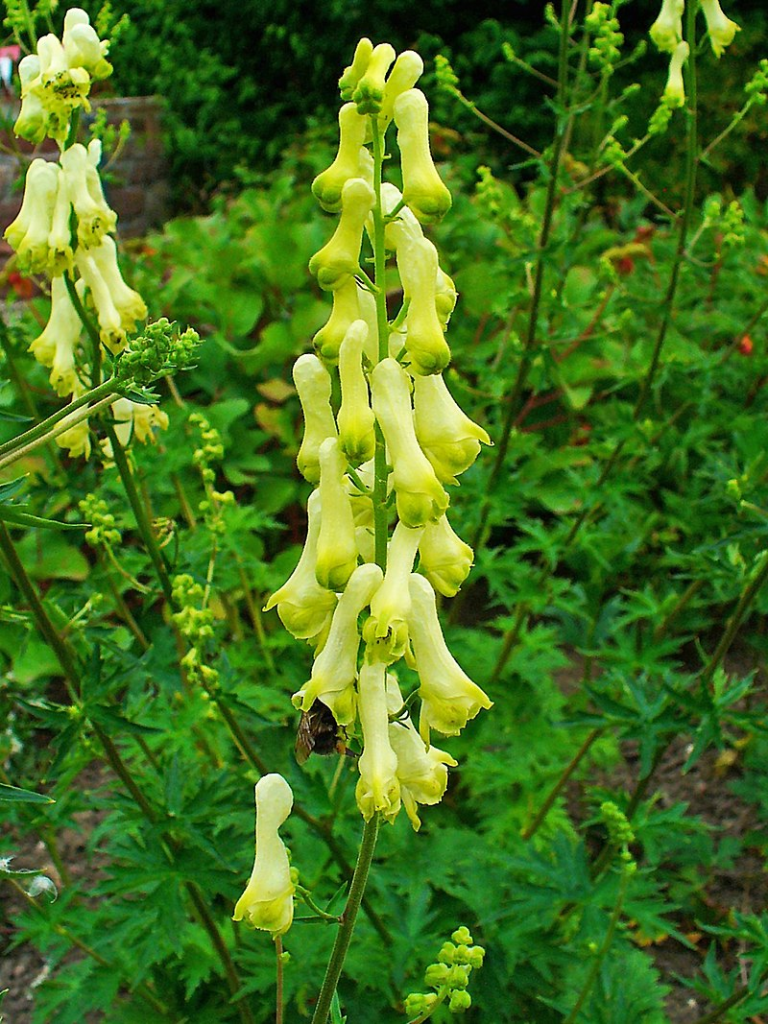
This herbaceous perennial is is native to Europe and parts of western Asia, where it grows in woodlands and moist meadows between the lowlands and the subalpine zone. It is a member of the buttercup family, Ranunculaceae, that also includes delphinium, anemone, and hellebore. Plants grow 3-5′ tall and have dark green, palmately lobed leaves with four to six deeply cut lobes. In mid- to late summer, racemes of pale yellow or lavender flowers appear. Each flower is .3-1″ long, and has a narrow helmet and nectaries with long tips. The flowers attract pollinators such as bees but are pollinated primarily by long tongued bumble bees because of the long tipped nectaries. Flowering stems are good in the vase. The derivation of the genus name, Aconitum, is disputed but may be derived from a Greek word ἀκόνιτον (akoniton) which may come from the Greek word ἀκόν (akon) meaning dart or javelin, the tips of which were dipped in poison. The specific epithet, lycoctonum, comes from the Greek words lycos, meaning wolf, and kteinein, meaning kill and refers to the plant’s use in poisoning arrows and bait used to kill wolves.
Handle the plant with care as all parts of the plant, especially the root and seeds, are toxic.
Type: Herbaceous perennial
Bloom: Racemes of pale yellow helmeted flowers in mid- to late summer
Size: 3-5′ H x 1-2′ W
Light: Partial shade to full sun
Soil: Fertile, consistently moist, well-drained
Hardiness: Zones 3-7
Care: Deadhead to prolong bloom; mulch to conserve moisture, cut down after bloom
Pests and Diseases: Generally healthy but can be damaged by powdery mildew or downy mildew in humid conditions and root rot if over watered or planted in poorly draining soil; does not tolerate high heat or humidity
Propagation: Seed, division
Companion Plants: Japanese anemone, ferns, hosta, astilbe
Photo Credit: H. Zell, Wikimedia Commons